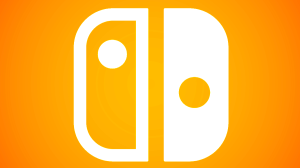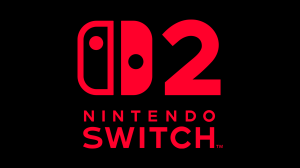Sekiro: Shadows Die Twice isn’t a Dark Souls game, but with a style as unique as FromSoftware’s, it’s impossible to avoid comparisons. Whether you come all the way from Demon’s Souls or started out with Bloodborne, you’ll find different pieces of FromSoftware’s “SoulsBorne” family in Sekiro. It’s relentless yet fair, brutal while still being stylish, and one of the developer’s best works yet.
Videos by ComicBook.com
Difficulty is synonymous with FromSoftware, and it can also be the gatekeeper that decides whether someone even attempts a game. It’s no surprise then that Sekiro‘s difficulty level has been one of the most talked about aspects of the game before and after its launch. Tentative Sekiro players watched their favorite streamers become so focused when fighting even minor bosses that the stream became an afterthought, and even that focus wasn’t always enough to win. The game’s difficulty is daunting, but it does get easier.
No longer are players a knight, a noble, or any other typical role-playing class; you’re a shinobi in 1500s Sengoku Japan, born into battle and sworn to protect a young lord. Aside from one setback, you’re not half bad at doing it. FromSoftware locks players into one character, a deviation from its usual formula, but doing so evens the playing field. You’ve still got skills and prosthetic weapons to choose from, but most every enemy can be dispelled with a sword alone. In this way, Sekiro has the lowest barrier of entry of all FromSoftware games.

Take it from someone who’s explored every “SoulsBorne” game and sought out each optional boss wherever they may hide: Sekiro is both the hardest and easiest FromSoftware game — depending on how far along you are. You can’t play this like a Dark Souls game, and you can’t even play it like Bloodborne despite the game’s combat being most like the aggressive style required in Yharnam. Sekiro feels like a culmination of styles before it that weened players off turtling tactics through Dark Souls III’s poise debacle and Bloodborne‘s emphasis on balancing attacks and parries. Veterans might have the upper hand on massive, hulking enemies that encourage dodges and quick hits, but the game does its best to break old habits and force players to play the intended way. The learning curve is massive, but once that obstacle is overcome, the rest of the game feels much more manageable.
Sekiro’s Posture system, which rewards high-pressure styles and risks, is the beating heart of the game. It’s a brilliant system which fulfills the fantasy of the swift duelist the One-Armed Wolf is presented as. Vitality and Posture are intertwined, and players can either score a deathblow on an enemy by depleting health or maxing out the foe’s Posture bar, but you’ll find the latter often happens much quicker. One might feel as though they’ve unleashed a barrage of attacks on a boss and landed a few smart hits, but if you back off for a second to heal and give the enemy time to breath, you’re back to square one as their Posture recharges.
Lady Butterfly, for example, is the first boss players encounter that presents a full realization of how to play Sekiro. She’s located immediately after players encounter an outlandishly large drunkard with an imposing health bar to match. The two couldn’t be more different, but if we consider the rest of the enemies to be gentle nudges in the way of Sekiro, Lady Butterfly is the gatekeeper that says you won’t continue past her until you understand the game’s mechanics.
Her attacks are relentless and varied, and after dying to her multiple times, something should eventually click: she’s showing you how to play Sekiro. She mixes up attacks with jumps and dashes, throws projectiles, and she’ll deflect and block your attacks if you get greedy. Lady Butterfly is a wonderfully stylish boss that’s fun to watch other people fight, but the boss fight’s design is profoundly more rewarding when you realize she’s a better tutorial than Hanbei the Undying will ever be.
The rest of Sekiro’s bosses are just as impressive. If there was ever a FromSoftware game to deserve a boss rush mode, it would be Sekiro, with foes like Lady Butterfly and the Guardian Ape that are right up with Ornstein and Smough and Father Gascoigne. They’re so plentiful and diverse that the line between mini-boss and the real deal is blurred, and most of them are fair without any gimmicky tactics. There are some like the Lone Shadow Longswordsman that feel like you’re fighting a Capra Demon all over again because of wonky camera angles that restrict what players see and how they move. That exact boss does highlight another issue though – deathblows from above or even behind simply fail to work, which might limit someone who’s opting for a stealthier playthrough.
Though Sekiro‘s combat feels rewarding, its items and even the shinobi prosthetics leave something to be desired at times. Sekiro throws so many items at you to the point that it’s not uncommon to end up with a stockpile of unused tools. Using various sugars to buff stats like damage and stealth temporarily sounds worthwhile, but the duration of the effect is so low that the benefits are almost negligible. Likewise, Ceramic Shards are basically only worth collecting to sell for Sen since they barely have an impact on the game.

Prosthetic tools are a treat to use and are essential in the game’s RPG formula, so it’s a shame that their potential isn’t fully realized until later in the game when players are comfortable enough with the combat to not need them. Upgrades that require tons of materials and gold feel like they turn the One-Armed Wolf into the shinobi he’s meant to be, but you can essentially go through the whole game by using just three prosthetics. The unique weaknesses enemies and bosses have to certain prosthetics are nice touches that make you feel like you’re outplaying an opponent though, even if they’re not always necessary.
Despite taking out the character-building aspect that’s supported countless playthroughs of FromSoftware games, the developers managed to ensure Sekiro is replayable with multiple endings and hidden bosses. It’s hours worth of grueling and rewarding battles elongated by both difficulty and a vibrant world that begs to be explored, and there are even ways to make it harder for those who desire that extra challenge.
“SoulsBornIro” or whatever else people might call FromSoftware’s games now doesn’t roll off the tongue quite as well, but make no mistake: Sekiro is among the best of FromSoftware’s works. With one playthrough finished, a second underway, and the Demon Bell rung, Sekiro is just as exhilarating as it was the first time, and that doesn’t look like it’ll change on subsequent runs.
Rating: 5 out of 5
Sekiro: Shadows Die Twice is now available on PlayStation 4, Xbox One, and PC. A download code was provided by the publisher for the purpose of this review.









